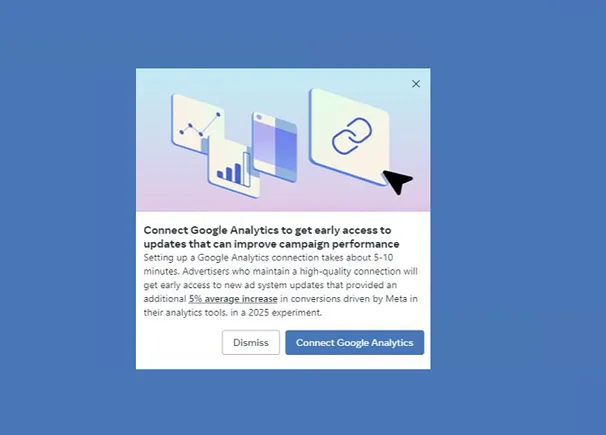Businesses can create, build, manage, and monetize digital assets that will be used across various realities, thanks to enterprises that provide Metaverse platforms and tooling technologies.
Mark Zuckerberg, the CEO of Facebook, unveiled Meta Platforms, Inc. as the new corporate name in 2021. (formerly Facebook, Inc.). Meta Platforms, Inc., also known as Meta, has already announced the first investment of USD 10 billion intended solely for creating the Metaverse.
Additionally, they have successfully obtained numerous patents relating to incorporating biometric data from Metaverse users into the virtual environment they are building.
The ability of Metaverse to map data from real-life and transform it into virtual reality may be its biggest problem at the moment, making the connection between the Internet of Things (IoT) and Metaverse obvious. This information must be precise, well-organized, practical, safe, and current. Although IoT has been around for a while, the Metaverse is poised to incorporate hundreds of sensors, cameras, wearables, and other devices.
IoT and the Metaverse will support one another. They already have the byname “tech twin” from some analysts.
The Metaverse will serve as a 3D user interface to the IoT devices, allowing for a new, customized IoT user experience, while IoT will allow Metaverse to analyze and interact with the real environment. IoT and the Metaverse will both make it easier for people to make data-driven decisions with less effort and training.
What Exactly Is Metaverse?
The Metaverse is a 3D virtual world where people can utilize specialized equipment, such as an Oculus headset, to escape from the actual world. It uses augmented and virtual reality to let users move seamlessly between the real and virtual worlds. Consider it a brand-new Internet era where people do not need to sit in front of a screen to browse the web.
What can you use it for then? Human creativity is the only constraint. You can engage in various activities, including viewing movies, playing games with other users, and having more engaging and realistic conversations with one another.
Once and for all, the Internet will undergo a revolution. Analysts and professionals predict that the Metaverse will be the next great thing. The way we view and use the Internet will alter due to this virtual world, which will also impact other industries such as e-commerce, social media, real estate, and education.
What is IoT or the Internet of Things?
The Internet of Things is an interconnected world of computing devices, digital and mechanical equipment, things, etc. These gadgets don’t ever need to interface with other people or other computers in order to transfer data smoothly over a network.
The sensors, security protocols, and cloud computing are essential to IoT technology. Above all, web-enabled smart devices with integrated hardware like processors, memory, sensors, and communication hardware are what give an IoT ecosystem its power.
Metaverse and IoT: How Will They Complement Each Other?
The Metaverse can be thought of as an upgraded version of the Internet. In actuality, the Metaverse is not reliant on a computer screen; instead, it provides the ideal channel for expansive social interactions amongst individuals.
With this technology, people can interact with others while playing games, watching movies, or virtually visiting a popular tourist location. With the help of 3D technologies, VR, AR, and AI, Metaverse successfully expands internet possibilities.
Although the Internet of Things (IoT) already successfully connects physical objects to the Internet. However, incorporating Metaverse can undoubtedly give consumers new opportunities. When used in conjunction, these technologies would make it possible to transfer real-time data from the physical world to the digital one.
As a result, the gap between the real world and the virtual world would be greatly diminished. With the help of the Metaverse, IoT devices will be more connected online and offline. Additionally, with the aid of IoT devices, consumers could simply design their digital avatars.
With the utilization of Digital Twins, among other things, the Metaverse is expected to impact IoT significantly. In fact, with the ongoing Metaverse implementation, IoT technology will advance much more quickly.
The following are a few ways Metaverse will impact IoT:
- Enhancing Real-World Training
Artificial intelligence and practical experience are essential to Metaverse’s fundamental premise. Organizations will benefit immensely from using Metaverse in IoT to run virtual simulations to increase the scope and authenticity of training.
To enhance the exam preparation process, IoT can assist in gathering more precise and timely data from the actual world. People involved in Metaverse can create more sophisticated software or AI algorithms to identify issues and illustrate real-life consequences. As a result, when we take the Internet of Things into account, the Metaverse’s virtual world can accurately represent reality.
- Personalized User Interface Environment
IoT devices often have a simple interface and interact with real-world devices. But standard IoT devices with screens may employ Metaverse to offer a 3D digital user experience.
As a result, using IoT devices will give users a more immersive experience. The ability to stay present in real and virtual worlds will be available. As a result, companies can hire an IoT app developer to greatly customize the user interface and experience.
As said above, the Metaverse will feel more akin to the physical world when IoT is used. More interaction between people and IoT devices and the intricate environment and processes of the Metaverse will be possible. We will be able to make better decisions with less learning and training, thanks to the immersive nature of the Metaverse and the real-world use cases.
- Effective for Long-Term Planning
The amount of digital content derived from real-world objects, such as structures, people, cars, clothing, etc., constantly expands in the Metaverse. As a result, businesses aim to replicate our physical world exactly in cyberspace. Companies can plan for many circumstances and improve their long-term goals with the aid of IoT and Metaverse.
Real-time data is crucial for accurate simulation of diverse scenarios and successful long-term planning. Industries like energy, transportation, healthcare, fashion, etc., may all greatly benefit from this. Above all, AI and machine learning may play a big role in long-term planning.
- Significant Impact On Cloud Technology
Cloud technologies are crucial to both IoT and Metaverse. However, their combination might undoubtedly change cloud technology’s potential. In fact, with the integration of the Metaverse into IoT devices, cloud platforms like Amazon AWS and Microsoft Azure may seem and operate quite differently. With the aid of the IoT Metaverse, cloud service providers could realize the full potential of cloud computing.
Better scalability, resilience, and seamless functionality will be possible for developers of cloud technologies to achieve with their structural infrastructures. Thanks to the Metaverse, cloud computing users will have access to extra processing power.
- Interaction Based Computing
A computer screen or input device is used for the majority of digital interactions with computers. IoT devices require people to submit data using a console or a few buttons.
The Metaverse’s AR and VR technology usage will alter how we interact with IoT devices. Users won’t even be able to tell if they are interacting in the actual or virtual environment. This will make the experience very realistic and contextualized.
This will be made possible by IoT devices with extended reality capabilities. More immersive and interaction-based computing will be possible with the help of IoT with motion detection, AI-enabled edges, and tailored data-gathering sensors.
Conclusion
With the Metaverse and Web 3.0, it seems clear that the Internet’s future will improve. Adding a Metaverse will also make IoT gadgets and programs far more innovative and immersive. Consequently, many companies scramble to recruit Blockchain developers for their IoT applications.







































































